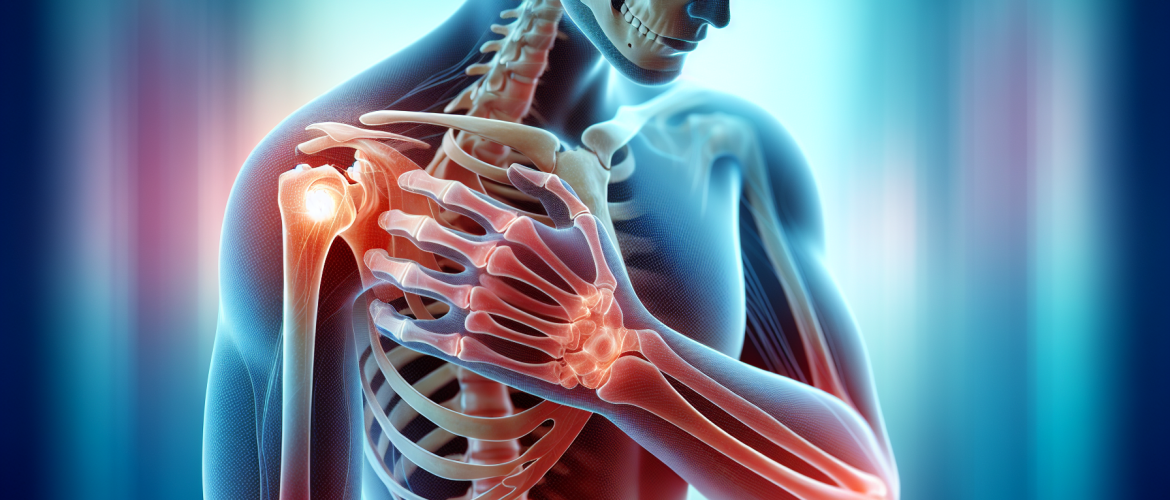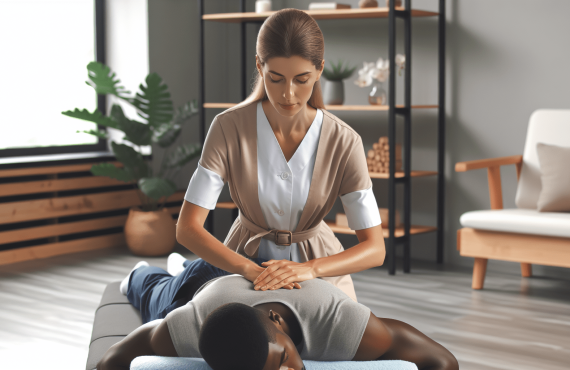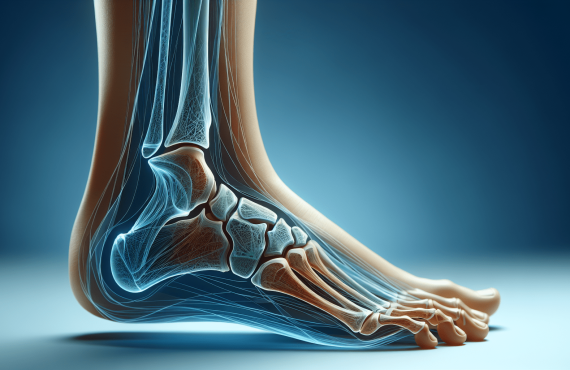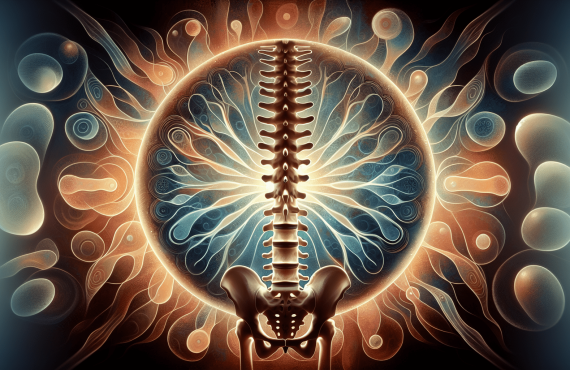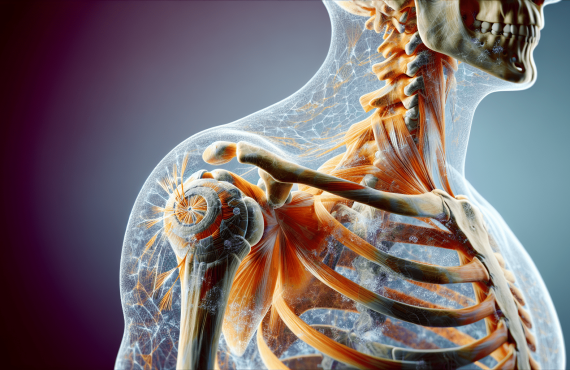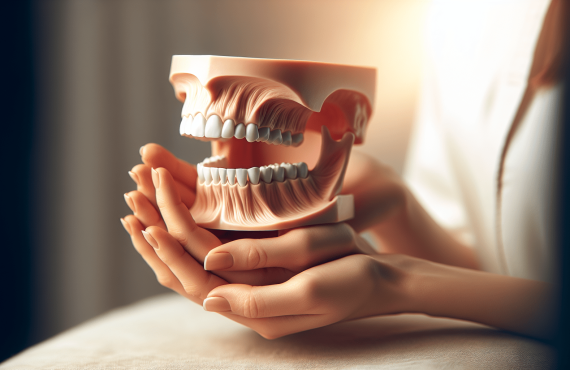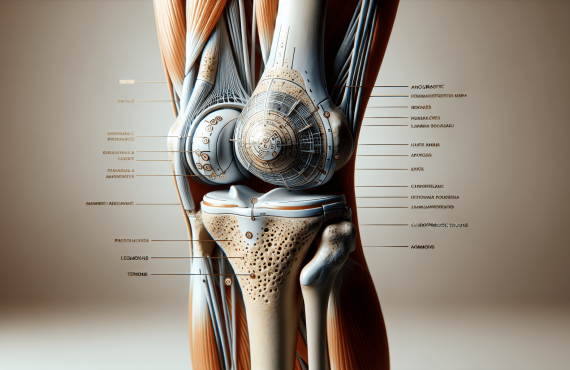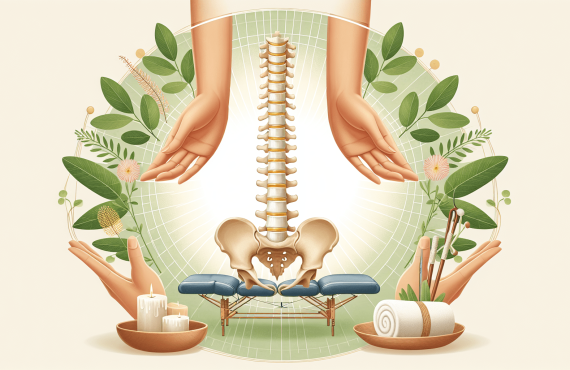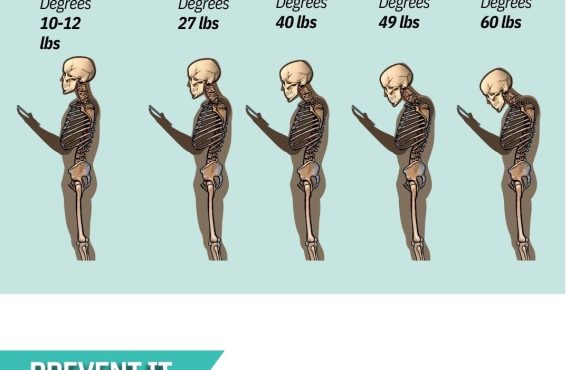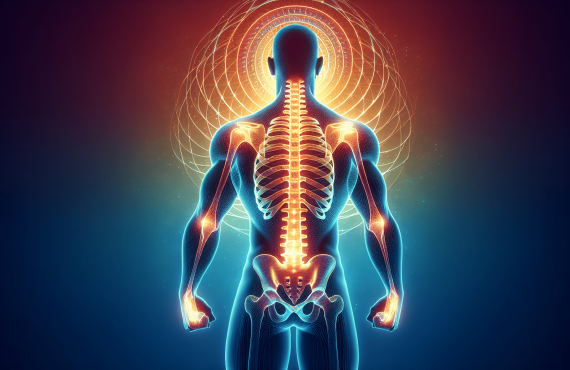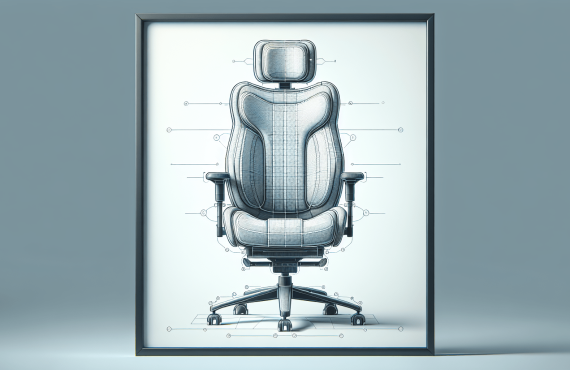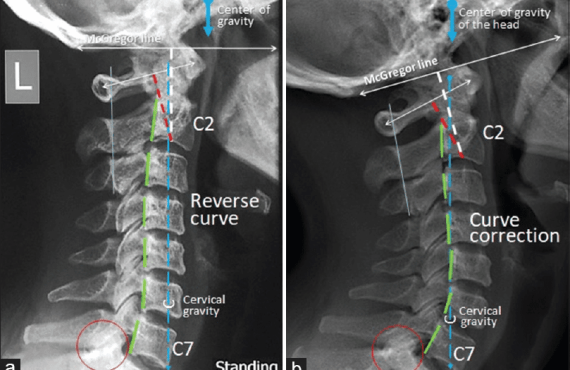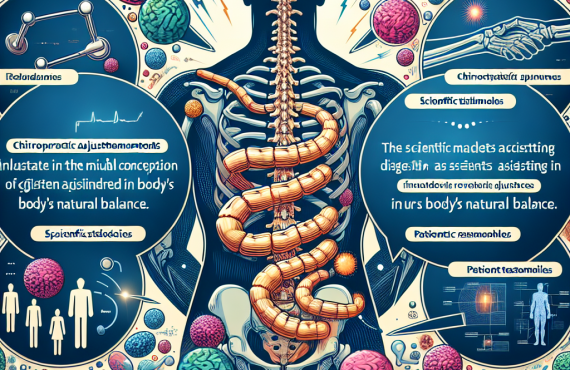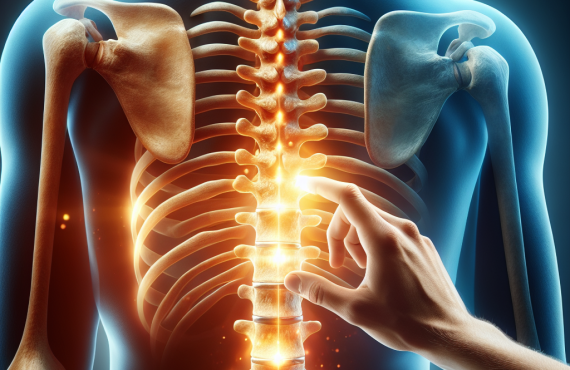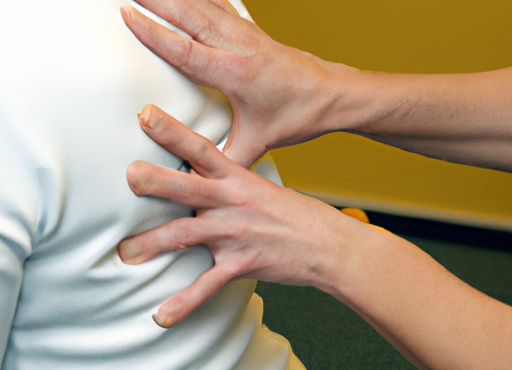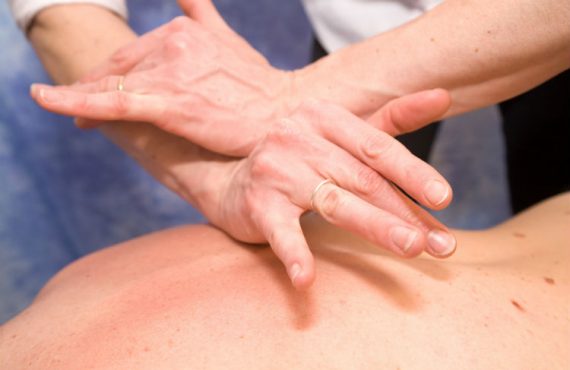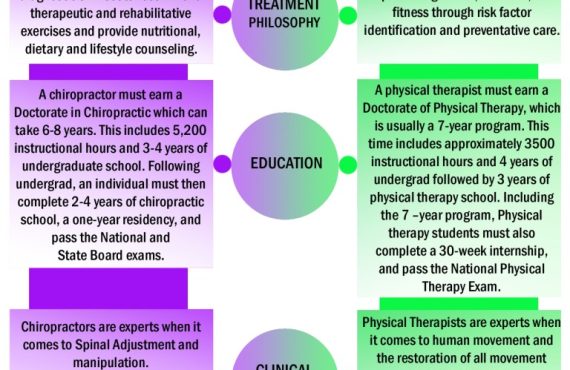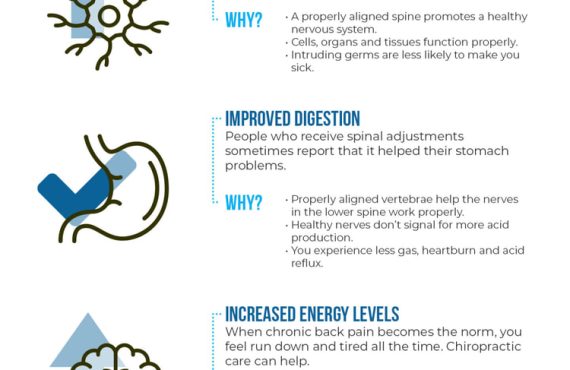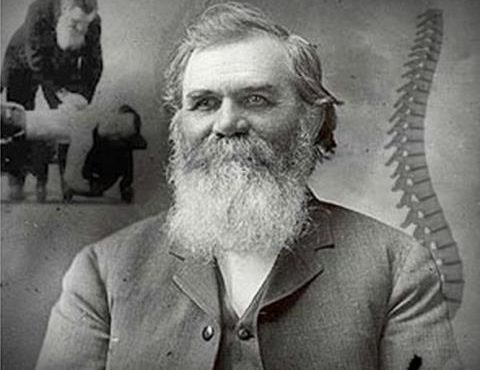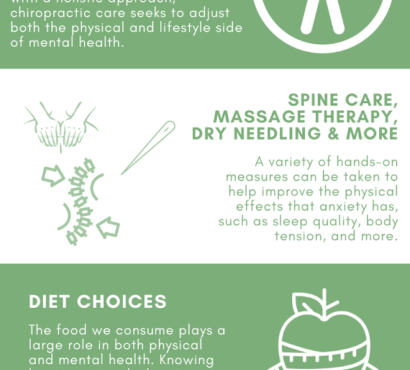If you’re experiencing shoulder pain and looking for solutions, look no further than Henry Chiropractic in Pensacola, Florida. Owned and operated by Dr. Craig Henry, a licensed chiropractor, this clinic is dedicated to improving your health and wellness. Whether you’re dealing with back pain, neck pain, or simply want to start feeling better, Dr. Henry and his team are here to help. Alongside Dr. Henry, Dr. Aaron Hixon, another experienced chiropractor, is ready to provide expert care using a variety of techniques tailored to your needs. Don’t let shoulder pain hold you back any longer – reach out to Henry Chiropractic today and take the first step towards a pain-free life.

Table of Contents
Understanding Shoulder Pain
Shoulder pain can be a debilitating condition that affects your daily activities and quality of life. It can limit your range of motion and cause discomfort when performing simple tasks like reaching for an object or lifting something overhead. Understanding the causes, symptoms, and risk factors associated with shoulder pain is essential in seeking the appropriate treatment and finding relief.
Causes of Shoulder Pain
Shoulder pain can be caused by various factors, including:
-
Rotator cuff injuries: The rotator cuff is a group of muscles and tendons that surround the shoulder joint. Injuries to the rotator cuff can result from repetitive motions, trauma, or overuse, leading to inflammation, pain, and limited mobility.
-
Frozen shoulder: Also known as adhesive capsulitis, frozen shoulder is a condition characterized by stiffness and pain in the shoulder joint. It usually develops gradually and can be caused by injury, immobilization, or certain medical conditions.
-
Shoulder impingement: This occurs when the rotator cuff tendons get pinched between the shoulder blade and the upper arm bone. It can be caused by repetitive overhead activities, structural abnormalities, or muscle imbalances.
-
Arthritis: Osteoarthritis and rheumatoid arthritis can affect the shoulder joint, causing pain, stiffness, and inflammation.
-
Bursitis: Bursae are small fluid-filled sacs that cushion the bones, tendons, and muscles around a joint. When these bursae become inflamed, it can cause shoulder pain and limited mobility.
Common Shoulder Pain Symptoms
Shoulder pain can manifest in various ways, and the symptoms may include:
-
Pain: Dull ache or sharp pain that worsens with movement or specific activities.
-
Limited range of motion: Difficulty moving the shoulder or raising the arm overhead.
-
Weakness: Weakness or difficulty performing everyday tasks that require shoulder movement, such as lifting or reaching.
-
Stiffness: Feeling a decreased range of motion or tightness in the shoulder joint.
-
Swelling: Swelling or inflammation around the shoulder joint.
If you experience any of these symptoms, it is essential to consult a healthcare professional for an accurate diagnosis and appropriate treatment.
Risk Factors for Shoulder Pain
Certain factors may increase your likelihood of experiencing shoulder pain. These risk factors include:
-
Age: As we age, the risk of developing shoulder problems, such as rotator cuff tears or arthritis, increases.
-
Occupational hazards: Jobs that require repetitive shoulder movements or prolonged periods of overhead activity, such as painting or construction work, can increase the risk of shoulder pain.
-
Sports activities: Participating in sports that involve repetitive shoulder motions or contact, such as swimming, tennis, or weightlifting, can contribute to shoulder injuries and pain.
-
Poor posture: Slouching or having poor posture can put unnecessary strain on the shoulder joint, leading to pain over time.
-
Pre-existing conditions: Certain medical conditions, such as diabetes or thyroid disorders, may increase the risk of developing shoulder pain.
By understanding these risk factors, individuals can take proactive steps to prevent shoulder pain and seek appropriate treatment if necessary.
Chiropractic Approach to Shoulder Pain
Chiropractic care offers a holistic and non-invasive approach to treating shoulder pain. Chiropractors are trained healthcare professionals who specialize in diagnosing and treating musculoskeletal conditions, including shoulder pain. They use a variety of techniques and therapies to alleviate pain, restore mobility, and improve overall shoulder function.
Benefits of Chiropractic Care for Shoulder Pain
Chiropractic care provides several benefits for individuals experiencing shoulder pain. These benefits include:
-
Pain relief: Chiropractic adjustments and therapies can help reduce shoulder pain by addressing the underlying cause of the pain and promoting natural healing.
-
Improved mobility: Chiropractic care aims to restore the range of motion in the shoulder joint, allowing individuals to move their shoulders with greater ease and comfort.
-
Non-invasive treatment: Chiropractic care offers a non-invasive alternative to surgical interventions or medications for shoulder pain. It focuses on natural healing and the body’s ability to restore itself.
-
Individualized treatment plans: Chiropractors develop personalized treatment plans based on the specific needs and condition of each patient. This ensures that the treatment approach is tailored to address the underlying cause of the shoulder pain.
Chiropractic Techniques for Shoulder Pain
Chiropractors utilize various techniques to treat shoulder pain effectively. These techniques may include:
Spinal Manipulation
Spinal manipulation, also known as chiropractic adjustment, involves applying controlled, sudden force to specific joints in the spine or shoulder to improve mobility and reduce pain. This technique aims to restore proper alignment and function to the shoulder joint.
Soft Tissue Therapy
Soft tissue therapy involves manual manipulation of the soft tissues surrounding the shoulder joint, such as muscles, tendons, and ligaments. It helps alleviate pain, reduce inflammation, and improve flexibility and range of motion.
Joint Mobilization
Joint mobilization techniques involve gently moving or stretching the shoulder joint to improve mobility and reduce pain. These techniques help restore proper joint mechanics and promote healing.
Chiropractors may use a combination of these techniques based on the individual needs and preferences of each patient. The goal is to provide a comprehensive and effective treatment approach for shoulder pain relief.
Chiropractic Adjustment for Shoulder Pain
Chiropractic adjustments specifically target the shoulder joint to enhance mobility and alleviate pain. During a chiropractic adjustment for shoulder pain, the chiropractor will use their hands or a specialized instrument to apply controlled force to the affected area. This gentle force helps restore proper alignment and function to the shoulder joint, reducing pain and inflammation.
Chiropractic adjustments are safe and effective when performed by qualified professionals. They can provide immediate relief for individuals experiencing shoulder pain and contribute to long-term healing and improved shoulder function.

Evaluation and Diagnosis
An accurate evaluation and diagnosis are crucial in determining the best course of treatment for shoulder pain. When you seek chiropractic care for shoulder pain, the evaluation and diagnostic process typically involves the following steps:
Initial Consultation with a Chiropractor
During the initial consultation, the chiropractor will review your medical history, discuss your symptoms, and ask questions to understand the nature and severity of your shoulder pain. This information helps the chiropractor assess the underlying cause of your shoulder pain and develop an appropriate treatment plan.
Physical Examination and Range of Motion
A thorough physical examination will be conducted to assess your shoulder joint’s range of motion, strength, stability, and any signs of inflammation or injury. The chiropractor may perform specific tests, such as the Neer’s test or Hawkins-Kennedy test, to determine the affected structures in the shoulder.
Additional Diagnostic Tests
In some cases, additional diagnostic tests, such as X-rays, MRI, or ultrasound, may be recommended to obtain a detailed view of the shoulder joint and surrounding structures. These tests can help identify any structural abnormalities, tears, or other underlying problems contributing to the shoulder pain.
By conducting a comprehensive evaluation and diagnosis, chiropractors can formulate an individualized treatment plan to address the underlying cause of the shoulder pain effectively.
Common Chiropractic Treatments
Chiropractic treatments for shoulder pain encompass a range of techniques and therapies aimed at reducing pain, promoting healing, and restoring optimal shoulder function. These treatments may include:
Spinal Manipulation
Spinal manipulation, as previously mentioned, is a primary treatment technique used by chiropractors. It involves applying controlled force to specific joints in the spine or shoulder to improve mobility and reduce pain.
Soft Tissue Therapy
Soft tissue therapy techniques, such as massage, myofascial release, or trigger point therapy, are used to target the muscles, tendons, ligaments, and other soft tissues surrounding the shoulder joint. These therapies help relieve muscle tension, reduce inflammation, and improve blood flow to promote healing.
Joint Mobilization
Joint mobilization involves gentle movements or stretches of the shoulder joint to improve mobility, reduce pain, and restore proper joint mechanics. The chiropractor applies manual pressure or uses specialized tools to mobilize the joint.
Chiropractors may combine these treatment techniques with other modalities, such as heat or cold therapy, electrical stimulation, or therapeutic exercises, to create a comprehensive treatment plan tailored to your specific needs.
Specialized Chiropractic Techniques for Shoulder Pain
In addition to the common chiropractic treatments, specialized techniques are available that specifically target shoulder pain:
Active Release Technique (ART)
Active Release Technique (ART) is a soft tissue therapy technique that focuses on breaking up scar tissue and adhesions in the muscles and soft tissues surrounding the shoulder joint. It involves applying specific pressure and tension to the affected areas to restore optimal function and range of motion.
Graston Technique
The Graston Technique utilizes specialized instruments to perform soft tissue mobilization. It targets the muscles and fascia around the shoulder joint, helping to reduce pain, increase circulation, and promote tissue healing.
Kinesio Taping
Kinesio taping involves applying a special type of elastic tape to the skin over the affected shoulder. This taping technique supports the shoulder joint, provides stability, and improves proprioception. It can help reduce pain, inflammation, and muscle fatigue associated with shoulder pain.
These specialized chiropractic techniques offer targeted and effective treatment options for individuals experiencing shoulder pain. A chiropractor can determine which technique or combination of techniques is most suitable for your specific condition.
Exercise Rehabilitation
Exercise rehabilitation plays a critical role in the treatment and management of shoulder pain. Engaging in suitable exercises and rehabilitation programs can help strengthen the muscles, improve flexibility, and support the overall healing process. Benefits of exercise rehabilitation for shoulder pain include:
Benefits of Exercise Rehabilitation for Shoulder Pain
-
Improved strength: Targeted exercises can strengthen the muscles around the shoulder joint, providing better support and stability.
-
Increased flexibility: Stretching exercises can help improve flexibility and range of motion in the shoulder joint.
-
Enhanced healing: Exercise promotes blood circulation and the delivery of essential nutrients and oxygen to the injured shoulder, aiding in the healing process.
-
Prevention of further injury: Strengthening and stabilizing the shoulder muscles through exercise can reduce the risk of future shoulder injuries.
Specific Shoulder Rehabilitation Exercises
Shoulder rehabilitation exercises typically involve a combination of stretching, strengthening, and stabilizing exercises. Some common exercises include:
-
Wall slides: Stand against a wall and slide your arms up and down the wall while maintaining contact with your elbows, wrists, and hands.
-
External rotations: With a resistance band or light dumbbell, hold your elbow at a 90-degree angle and rotate your forearm outward.
-
Shoulder stretches: Gently stretch the shoulder joint by reaching across your chest and holding onto a stable surface or object.
It is crucial to consult a chiropractor or physical therapist for guidance and a personalized exercise program based on your specific condition and needs.
Home Exercises for Shoulder Pain Relief
In addition to supervised exercise rehabilitation, there are also home exercises that individuals can perform to complement their treatment and promote shoulder pain relief. These exercises may include:
-
Pendulum swings: Bend forward at the waist and let your affected arm hang down. Gently swing the arm in small circles, clockwise and counterclockwise.
-
Scapular squeezes: Stand against a wall with your elbows bent and palms facing forward. Squeeze your shoulder blades together and hold for a few seconds before releasing.
-
Shoulder stretches: Gently stretch the shoulder joint by reaching your affected arm overhead and behind your back.
It is important to perform these exercises with caution and stop immediately if you experience any increased pain or discomfort. It is always advisable to consult with a healthcare professional before starting any exercise program.
Lifestyle Modifications
Incorporating certain lifestyle modifications can significantly contribute to managing shoulder pain and preventing future flare-ups. These modifications may include:
Posture Correction
Improving your posture can alleviate unnecessary strain on the shoulder joint, reducing the risk of pain and injury. It is important to maintain proper spinal alignment and avoid slouching or hunching forward. Ergonomic adjustments, such as using a supportive chair and positioning your computer monitor at eye level, can also help improve posture.
Ergonomic Adjustments
Modifying your work environment to reduce stress on the shoulder joint is essential for individuals with shoulder pain. Adjusting the height and placement of your desk, chair, computer, and other work equipment can promote better posture and alignment, minimizing the risk of aggravating shoulder pain.
Preventive Measures and Self-Care
Practicing preventive measures and self-care can help minimize the occurrence of shoulder pain. Some self-care tips include:
-
Avoiding repetitive shoulder movements: If possible, try to avoid repetitive activities or actions that strain the shoulder joint, especially overhead motions.
-
Taking regular breaks: If you engage in activities that require prolonged use of the shoulder joint, such as typing or carrying heavy objects, take frequent breaks to give the shoulder rest and prevent overuse.
-
Maintaining a healthy weight: Excess weight can put additional stress on the shoulder joint. Maintaining a healthy weight through proper nutrition and regular exercise can help reduce the risk of shoulder pain.
-
Using proper lifting techniques: When lifting heavy objects, be sure to use your leg muscles and avoid putting excessive strain on the shoulder joint.
By incorporating these lifestyle modifications and practicing self-care, individuals can help prevent shoulder pain and maintain optimal shoulder health.
Combining Chiropractic Care with Other Treatments
In some cases, combining chiropractic care with other treatments can provide enhanced pain relief and overall improvement in shoulder function. Depending on the severity and underlying cause of the shoulder pain, chiropractors may recommend the following complementary treatments:
Physical Therapy for Shoulder Pain
Physical therapy is commonly used in conjunction with chiropractic care for shoulder pain. Physical therapists specialize in rehabilitating and restoring function to injured areas of the body. They can provide therapeutic exercises, stretches, and other modalities to complement chiropractic treatments and aid in the recovery process.
Massage Therapy for Shoulder Pain
Massage therapy focuses on manipulating the soft tissues to reduce muscle tension, improve blood circulation, and promote relaxation. Massage therapists can target specific areas of the shoulder to alleviate pain, reduce inflammation, and improve range of motion.
Acupuncture for Shoulder Pain
Acupuncture involves the insertion of thin needles into specific points on the body to stimulate natural healing and restore balance. Acupuncture can help alleviate pain, reduce inflammation, and promote overall healing in individuals with shoulder pain.
Combining chiropractic care with these complementary treatments may provide a more comprehensive and effective approach to addressing shoulder pain.
Precautions and Potential Risks
Chiropractic care for shoulder pain is generally safe and well-tolerated. However, there are some precautions and potential risks to be aware of:
Rare Side Effects of Chiropractic Care
While rare, some individuals may experience side effects from chiropractic care. These side effects may include temporary soreness, stiffness, or mild discomfort in the treated area. These symptoms typically resolve within a few days.
When to Consult a Medical Doctor
If your shoulder pain is severe, persists, or is accompanied by other concerning symptoms, it is essential to consult a medical doctor. They can evaluate your condition and determine if further medical intervention or imaging tests are necessary.
Choosing a Qualified Chiropractor
When seeking chiropractic care for shoulder pain, it is important to choose a qualified and licensed chiropractor. Look for a chiropractor with experience in treating shoulder pain and consider seeking referrals or reading reviews from previous patients. Dr. Craig Henry and Dr. Aaron Hixon at Henry Chiropractic in Pensacola, Florida, are licensed chiropractors specializing in various chiropractic techniques to alleviate shoulder pain.
Success Stories and Testimonials
Many individuals have achieved significant relief from shoulder pain through chiropractic care. Patient success stories and testimonials serve as a testament to the effectiveness of chiropractic treatments for shoulder pain. Here are a few examples:
Patient Success Stories
-
John, a construction worker, had been experiencing chronic shoulder pain after years of repetitive overhead motions. After a few weeks of chiropractic care, including spinal manipulation and soft tissue therapy, he reported a significant reduction in pain and improved shoulder mobility, allowing him to continue working without discomfort.
-
Sarah, a professional tennis player, developed shoulder impingement due to the repetitive motions involved in her sport. With a combination of chiropractic adjustments, exercise rehabilitation, and Kinesio taping, she experienced a faster recovery and was able to return to her training and competitions with improved performance.
Testimonials from Individuals with Shoulder Pain
-
“I had been suffering from frozen shoulder for months, and nothing seemed to alleviate the pain and stiffness. After just a few chiropractic sessions, I noticed a remarkable improvement in my range of motion and a reduction in pain. Chiropractic care has been a game-changer for me.” – Jane
-
“I was skeptical about chiropractic care at first, but the debilitating shoulder pain I was experiencing left me desperate for relief. I decided to give it a try, and I am incredibly grateful that I did. My shoulder pain has significantly diminished, and I can finally enjoy the activities I love again.” – Mike
Dr. Craig Henry and Dr. Aaron Hixon’s Success Rate
Dr. Craig Henry and Dr. Aaron Hixon at Henry Chiropractic have a high success rate in treating shoulder pain. With their expertise and specialized techniques, they have helped numerous patients achieve improved shoulder function and pain relief. Their commitment to personalized care and patient satisfaction has made them trusted chiropractors in the Pensacola, Florida, community.
In conclusion, chiropractic care offers a comprehensive and natural approach to addressing shoulder pain. By understanding the causes, symptoms, and risk factors associated with shoulder pain, individuals can make informed decisions about seeking chiropractic treatment. With a combination of chiropractic techniques, exercise rehabilitation, lifestyle modifications, and complementary treatments, individuals can find relief from shoulder pain and restore optimal shoulder function. If you are experiencing shoulder pain, consider consulting a qualified chiropractor, such as Dr. Craig Henry or Dr. Aaron Hixon at Henry Chiropractic, to develop a personalized treatment plan tailored to your specific needs.


